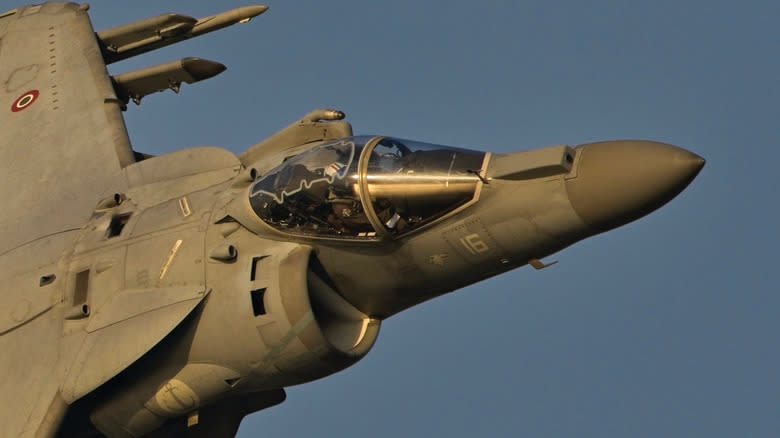Copyright yahoo

There's no platform that demonstrates cutting-edge technology better than the modern fighter jet. The F-22 Raptor gave America a supermaneuverable stealth fighter, putting the bar so high that its dominance cut its production short. The F-35 Lightning is would follow with its three variants filling a variety of roles across militaries and nations worldwide, while rewriting the playbook of modern air combat. These planes are a perfect visualization of just how far the fighter plane has evolved over the past century. But alongside the never-ending hunt for new ways to improve combat capabilities is the constant engineering struggle of protecting the pilot. That brings us to an overlooked design feature baked into fourth- and fifth-generation aircraft today. Take a close look at the canopy of an AV-8B Harrier, F-35, or T-45 Goshawk, and you might notice some strange-looking lines within its glass. These waves aren't a visual marking, but are actually detonation cords. As bizarre as it may seem to have explosives inches from pilots' heads, they could be crucial to their lives, as these cords are key players in ensuring a safe ejection. Read more: Ford Once Made A Mile-Long Factory To Build Bombers Faster Than Anyone Thought Possible Glass-shattering safety When ejecting from a fighter jet, you've got two options for setting up the grand escape. The first, most frequent method is simply jettisoning the canopy. This can be done using explosive bolts or even small rockets fitted into the canopy, letting it fly away when the ejection handle is pulled. The second is using those zigzags, known as a canopy severance system (CSS). The layout consists of explosive cords embedded in the glass directly above the crew members. When pulled, these cords detonate, shattering the glass and punching a hole in the canopy for the pilot to eject through. So why go with the squiggles over just separating the canopy? Safety. Early jettison systems needed a certain altitude and speed to give the canopy enough airflow and time to let the pilot eject safely. For planes like the Harrier and F-35B, which can take off and land vertically, it isn't easy to design a jettisoning system without catapulting the pilot directly into the canopy, with catastrophic results. As we saw with an F-15 several months ago, modern systems with jettisoning canopies can even work standing still and on the ground, letting pilots eject just four-tenths of a second after pulling the handle. However, these systems still eat up precious time for the canopy to clear the plane before the pilot ejects, giving the CSS a key advantage. DRDO Laboratories has implemented a CSS in the HAL Tejas light combat aircraft, promising to cut ejection time by 95%, to a fiftieth of a second. So the canopy's bizarre look could mean the fraction of a second that saves a pilot's life. Want more like this? Join the Jalopnik newsletter to get the latest auto news sent straight to your inbox, and add us as a preferred search source on Google. Read the original article on Jalopnik.



